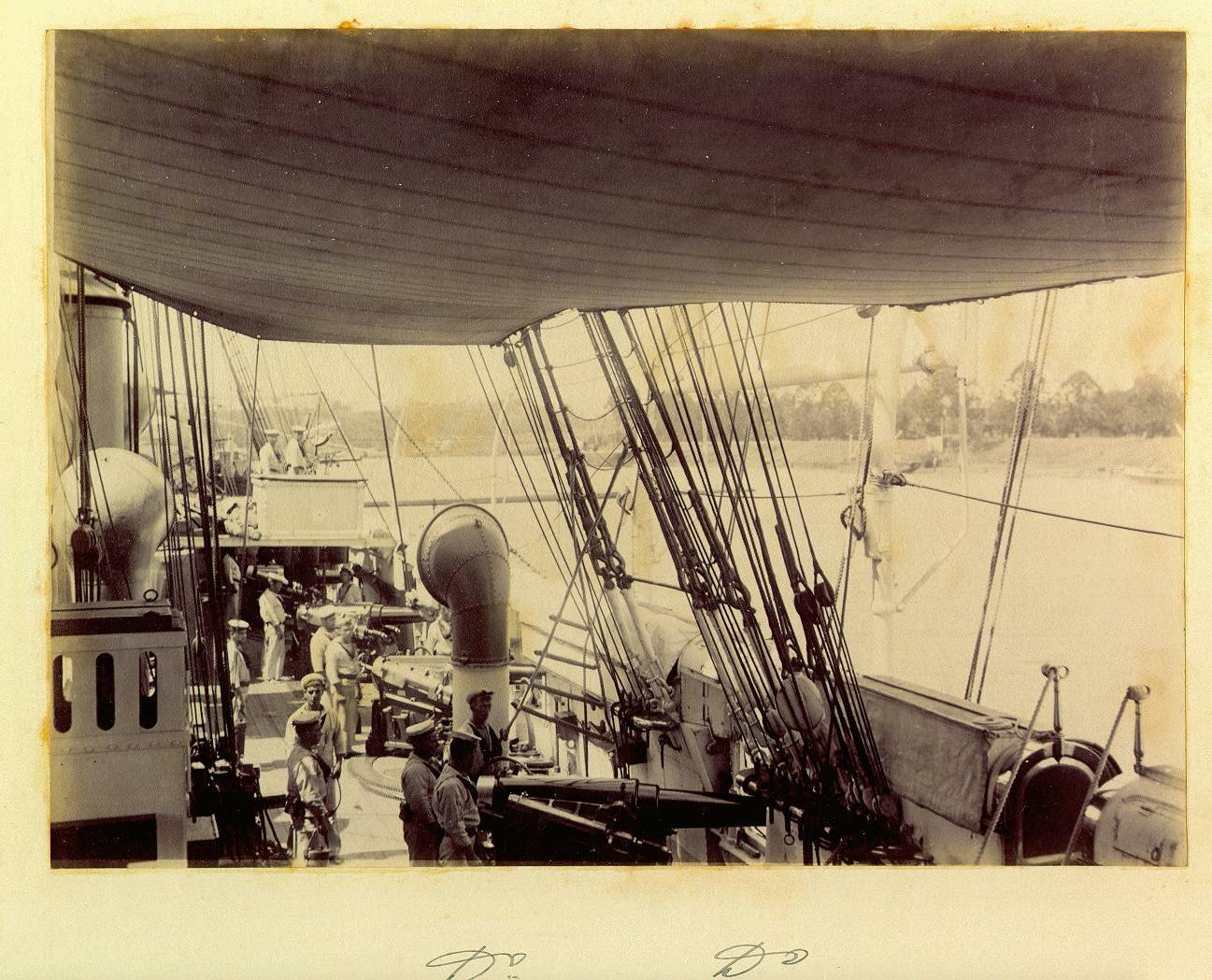HMS Pylades (1884) on:
[Wikipedia]
[Google]
[Amazon]
HMS ''Pylades'' was a composite

screw sloop
A screw sloop is a propeller-driven sloop-of-war. In the 19th century, during the introduction of the steam engine, ships driven by propellers were differentiated from those driven by paddle-wheels by referring to the ship's ''screws'' (propelle ...
of the Royal Navy
The Royal Navy (RN) is the United Kingdom's naval warfare force. Although warships were used by English and Scottish kings from the early medieval period, the first major maritime engagements were fought in the Hundred Years' War against ...
, built at Sheerness Dockyard
Sheerness Dockyard also known as the Sheerness Station was a Royal Navy Dockyard located on the Sheerness peninsula, at the mouth of the River Medway in Kent. It was opened in the 1660s and closed in 1960.
Location
In the Age of Sail, the Roy ...
and launched on 5 November 1884.Bastock, p.110. She was later reclassified as a corvette and was the last corvette built for the Royal Navy until the Second World War
World War II or the Second World War, often abbreviated as WWII or WW2, was a world war that lasted from 1939 to 1945. It involved the vast majority of the world's countries—including all of the great powers—forming two opposi ...
.
Service history
Initially on service with theNorth America and West Indies Station
The North America and West Indies Station was a formation or command of the United Kingdom's Royal Navy stationed in North American waters from 1745 to 1956. The North American Station was separate from the Jamaica Station until 1830 when the ...
, she commenced service on the Australia Station
The Australia Station was the British, and later Australian, naval command responsible for the waters around the Australian continent.Dennis et al. 2008, p.53. Australia Station was under the command of the Commander-in-Chief, Australia Station, ...
in November 1894.
From 30 May to 10 August 1896, she toured through the Solomon Islands
Solomon Islands is an island country consisting of six major islands and over 900 smaller islands in Oceania, to the east of Papua New Guinea and north-west of Vanuatu. It has a land area of , and a population of approx. 700,000. Its capit ...
with Charles Morris Woodford
Charles Morris Woodford (30 October 1852 – 4 October 1927) was a British naturalist and government minister active in the Solomon Islands. He became the first Resident Commissioner of the Solomon Islands Protectorate, serving from 1896 (three ...
, who had been appointed the Resident Commissioner of the Solomon Islands, which was administered as part of British Western Pacific Territories.
Commander Robert Hornby was appointed in command in September 1901. The following year she was with ( flagship) and when she visited Norfolk Island in July, and Suva, Fiji in August, then paid a visit to Gilbert Islands on her own. She left the Australia Station on 29 January 1905. She was sold to Cohen of Felixstowe
Felixstowe ( ) is a port town in Suffolk, England. The estimated population in 2017 was 24,521. The Port of Felixstowe is the largest Containerization, container port in the United Kingdom. Felixstowe is approximately 116km (72 miles) northea ...
for breaking on 3 April 1906.
''Pylades'' is what is known as "composite" built. Soon after the building of ships with iron was commenced, this composite system of construction was adopted in the British merchant service, and some very fast and celebrated vessels were thus constructed. The iron framing, with wooden skin planking, admitted of considerable strength being obtained, and the possibility of sheathing the bottom with metal in order to avoid fouling, appeared to be another advantage in favor of the composite system. Soon, however, it was shown that the galvanic action set up between the copper on the "yellow metal" sheathing, and the iron frames tended to rapidly deteriorate the ironwork, and perhaps, sooner or later, hasten the loss of the vessel. So rapid, indeed, was this wasting of the frame found to be, that for some time past the composite system has been, so far as regards merchantmen, quite abandoned. Some ships, however, are still built "composite" for the Royal Navy, especially such craft as are intended for use on foreign stations, and whose duties would render frequent docking impossible. Such vessels are built with frames of steel, then sheathed with wood, and coppered.

Citations
References
*Bastock, John (1988), ''Ships on the Australia Station'', Child & Associates Publishing Pty Ltd; Frenchs Forest, Australia. * 1884 ships Ships built in Sheerness Satellite-class sloops Victorian-era sloops of the United Kingdom {{UK-mil-ship-stub